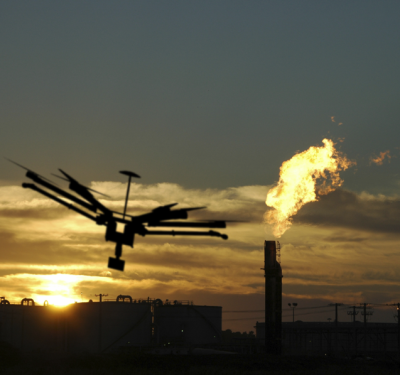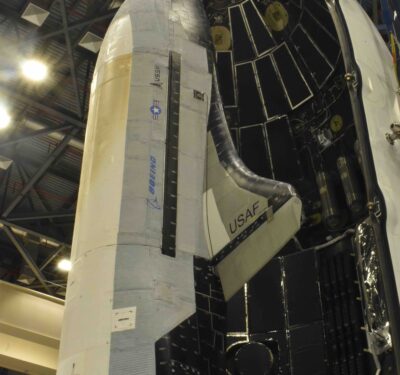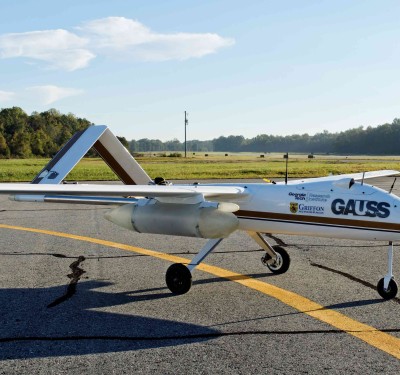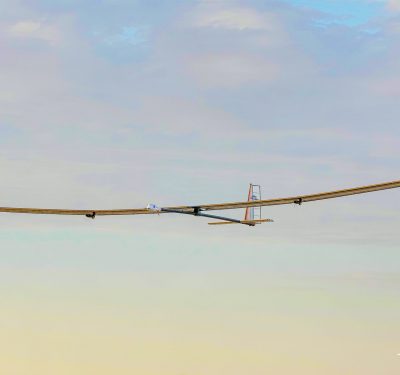At Xponential 2024 in San Diego, Inside Unmanned Systems sat down with Will Hasting, CEO of Angel Aerial Systems, to explore the Trio airframe, a versatile drone with a unique design and extended flight capabilities.
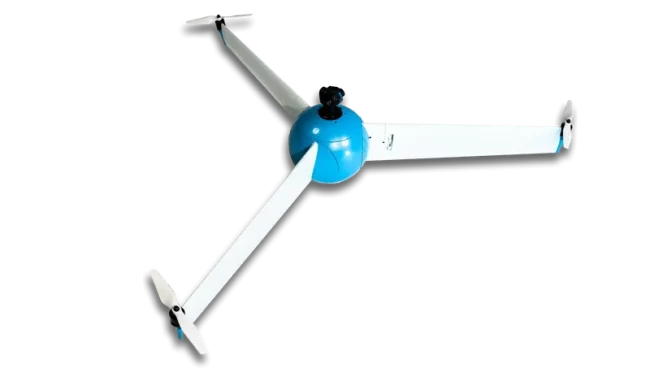
IUS: Hello, Inside Unmanned Systems, live from Xponential ’24 in San Diego. We’re here with Will Hasting, CEO of Angel Aerial Systems. Will, could you kick off and tell us about this very interesting airframe that you have in front of us?
WH: Yes, absolutely. Thank you, Richard. So this is the Trio airframe. It’s a simple design with a central hub and three wings. Each wing has a motor at the end and is independently modulated with a separate servo. There’s also a fourth motor inside that counter-rotates. It has three flight modes. It’s a bit large to do a live demonstration here in the booth, but basically, it takes off in VTOL mode, then flies in fixed-wing mode like the Imperial Shuttle from Star Wars, and finally, it has a windmill mode where it turns into a giant propeller. This design plays on the fundamentals from my past work with jet engines, where larger fan diameters lead to more efficiency.
Being an aerodynamicist and an outsider to the drone industry, I was shocked that quadcopters didn’t fly longer and that their airframe of choice was four small propellers, which seemed inefficient. Our design turns into a giant propeller that’s over a meter in diameter, significantly improving efficiency. The windmill mode is almost seven times more efficient than the VTOL mode, offering a two-hour hover time, which people are really excited about.
IUS: And how is it powered?
WH: It’s electric powered using standard drone components. Our core competency is in the aerodynamics and control systems, so we use standard motors and other components.
IUS: Interesting. With some of those really unique features, what are some customer use cases that this novel design unlocks?
WH: Absolutely, there are three main use cases we’ve been focusing on. The first is police and search and rescue. Larger police departments have had to decommission their helicopters due to cost and switch to drones, which typically fly for only 20 to 40 minutes. Our drone’s two-hour hover time is excellent for searching for missing persons or criminals. The second use case is inspections in remote areas, like transmission towers. Quadcopters provide better inspection data than helicopters but usually can’t fly long enough. Our drone can stay airborne longer, making it more effective. The final use case is military and tactical operations. As a naval veteran, I would love to support our military with this airframe. However, we’ve received the biggest response from police departments, so we’re focusing on that for now.
IUS: It makes sense, especially with its dynamic ability to get into difficult crevices where a standard quadcopter might struggle. How does an operator switch to the transition mode on the fly?
WH: It’s a push-button transition. We’ve made this process autonomous with solid control systems. At this conference, we’re among many drone enthusiasts, but we need to remember that some customers just want a reliable tool for their job. For example, in stakeout situations, the focus is on the mission rather than the thrill of flying a cool drone.
IUS: Absolutely. In terms of payload capability, what types of payloads have you seen used, and what additional ones could be deployed in the future?
WH: Our current theme is to do one thing and do it well. We’ve received feedback that some competitors offer multiple payloads, but integration isn’t always top-notch. We’re starting with a 40x RGB camera (20x optical and 2x digital) and a 640 by 480 thermal camera. We’ve had customers express interest in 80x zoom and better night vision and thermal capabilities.
IUS: Excellent. One last question about sensor integrations: what have you done so far, and what’s the vision for future sensor integrations?
WH: Right now, we haven’t outfitted the drone with detect-and-avoid capabilities, but that’s definitely on our roadmap. Despite its unconventional look, we aim to make this drone supremely easy for anyone to pilot.


